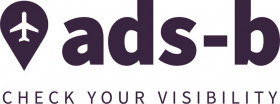ADS-B Already Improving Aviation Safety in New Zealand

The transition to ADS-B as New Zealand’s primary aviation surveillance system is well under way with new installations occurring month-on-month. The proportion of registered aircraft in New Zealand equipped with ADS-B continues to rise, and the greater this proportion is, the greater the safety benefits are for all.
We have received several accounts over the last few months of pilots utilising their combined ADS-B OUT and IN suites to safely and efficiently deconflict from other aircraft also on the system. One of these instances was a fixed-wing pilot recovering to an aerodrome in less than ideal lighting conditions being able to visually acquire a helicopter with the help of ADS-B IN when it would have been very difficult to do so otherwise. Other instances have been far from controlled airspace and aerodromes on VFR cross country flights. The ADS-B OUT and IN combination has helped several pilots to negotiate real-time avoidance of each other well in advance of any last-minute avoiding action that may have otherwise been required. In addition to pre-emptive deconfliction like above, it has long been recognised that situational awareness enhancers like ADS-B IN improve the effectiveness of one’s lookout by making those aircraft on the system easier to acquire, thus leaving more time to scan for unknowns.
Big Brother isn’t watching you
While stories like above are good news, we have noticed a slowing in the rate of ADS-B installations over the summer months. This may be because owner/operators are using their aircraft as intended, i.e. flying, not stuck in the hangar with the instrument panel in pieces, and to be honest, who can blame them. Or it may be because some people are reluctant to convert to ADS-B because of concerns about what the transmitted data will be used for. One of these concerns is that the CAA in its regulatory function will actively monitor ADS-B feeds, FlightRadar24 and the like, for enforcement purposes i.e. to catch people breaking the rules or not following procedures.
New Southern Sky spoke to CAA Deputy Chief Executive Aviation Safety Dean Winter about the issue and this is what he had to say:
“While many in the GA community are concerned that ADS-B data is open source and any member of the public can access it, the CAA does not routinely use this inherent characteristic of the system to surveil aviation activity.However, the CAA is obliged to follow up reports submitted to it through ARCs (Aviation Related Concerns) or other means.The Authority uses an intelligence-led, risk-based approach to its interventions in the civil aviation system. This means that it acts according to the information it receives and the data that it holds, acting according to the level of risk assessed for a sector, organisation, person or aircraft, or the travelling public.The CAA is committed to promoting a reporting culture in the aviation sector that is fair and proportionate as outlined in its policy on collection of safety information and regulatory operating modelThe bottom line is that the CAA does not routinely monitor FlightRadar24 and other flight tracking systems to ‘catch people out’. To do so would substantially damage the relationship between CAA and the aviation sector and erode the reporting culture that we all rely on to keep New Zealand’s aviation activities safe.”
New Southern Sky echo Mr Winter’s statement; our championing of ADS-B uptake is all about the real-time safety benefits for those in the air, not for intelligence gathering purposes for those on the ground.
What about privacy?
Another concern we have heard is around privacy of ADS-B data and the fact that essentially any member of the public can access it. If this is a barrier to you considering ADS-B, then there are things you can do to in mitigation.
Websites such as FlightRadar24 have ‘blocking’ options, and aircraft operators can apply to have their aircraft details blocked from the website. This is often a free service.
You can also apply to CAA to have the Registered Owner’s name and address made private on the aircraft register – this is also a free service. As flight tracking websites use the aircraft register to get registered owner information, aircraft on the websites will show up as ‘private’.
Getting New Zealand ‘across the line’
We encourage owner/operators to consider the full suite of ADS-B OUT and IN for the significant safety benefits in ALL airspace, not just what will be mandated beyond 31 December 2022. However, the rate of new ADS-B installations will need to improve after the summer flying period to avoid a bottleneck in workshops as commercial operators, and private fliers who need to access controlled airspace, seek to equip themselves before the mandate. Equipping early means getting to the head of the queue in terms of securing an installation and brings immediate safety benefits.
Do remember that the ADS-B grant scheme will provide up to $3000+GST rebate for the installation of both ADS-B OUT and IN. The more aircraft that equip with a full ADS-B suite, the more complete the digital situational awareness of all in the New Zealand aviation system will be.